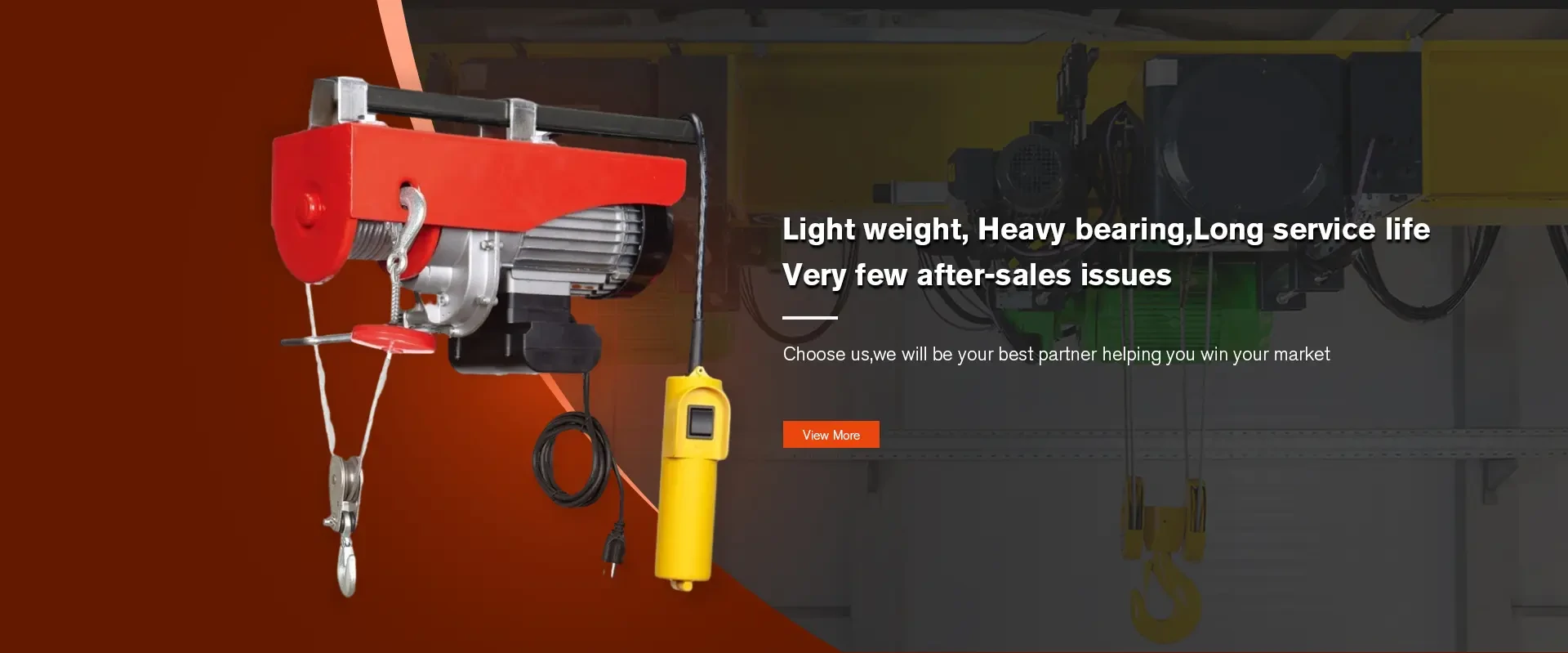


Understanding Chain Block Lever Type A Comprehensive Overview
In the realm of material handling and lifting equipment, the chain block lever type stands out due to its versatility, ease of use, and effectiveness in various applications. This device, often referred to as a lever hoist or manually operated chain hoist, employs a system of chains and levers to lift heavy loads with minimal effort. This article delves into the components, mechanism, advantages, applications, and maintenance of the chain block lever type, providing readers with a holistic understanding of this essential piece of equipment.
Components of a Chain Block Lever Type
At its core, the chain block lever type consists of several critical components that work together to facilitate lifting.
1. Hoist Body The main structure housing the internal components, usually made from durable materials like steel for longevity and robustness. 2. Chain The lifting chain, typically made from high-strength steel, is robust enough to handle heavy loads without breaking. It is also designed for smooth operation through the hoist.
3. Lever The lever is a pivotal component that allows the user to exert force and operate the hoist. By pulling down on the lever, the user can raise the attached load.
4. Load Hook Located at the end of the lifting chain, the load hook securely attaches to the load being lifted, ensuring safety during operation.
5. Ratchet Mechanism This component ensures that the hoist does not allow the load to fall back down once it has been lifted, providing essential safety and security.
Mechanism of Operation
The operation of a chain block lever type is relatively straightforward, making it accessible to users without extensive training. When the lever is pulled down, it engages the ratchet mechanism that allows the chain to wind up and lift the load. Due to the mechanical advantage provided by the lever and the arrangement of the gears inside, the user can lift significantly heavier loads than could be managed with manual strength alone. The design also allows for finer control over the load-lifting process, enabling operators to adjust heights incrementally as needed.
Advantages of Chain Block Lever Type
1. Ease of Use One of the primary benefits of the chain block lever type is its user-friendly design. It can be operated manually without the need for electrical power, making it suitable for various environments, including remote locations.
2. Portability These hoists are generally compact and lightweight, enabling easy transportation and deployment across job sites.

3. Cost-Effectiveness Compared to more complicated lifting systems, chain blocks are relatively inexpensive while still providing the necessary lifting power.
4. Safety Features Many models come equipped with safety features such as overload protection and automatic locking mechanisms that prevent accidental release of loads.
5. Versatile Applications Chain block lever types are available in various capacities and configurations, making them ideal for multiple applications, from construction sites to warehouses.
Applications
Chain block lever types are widely utilized across various industries due to their efficiency and reliability. Common applications include
- Construction Lifting and positioning heavy materials such as beams and scaffolding. - Warehousing Moving heavy boxes and pallets to optimize space and organization. - Automotive Hoisting engines and other large parts during repairs or installations. - Manufacturing Assisting in assembly lines and maintenance tasks.
Maintenance of Chain Block Lever Type
Proper maintenance is crucial to ensuring the longevity and efficiency of a chain block lever type. Here are some tips to keep the hoist in top condition
1. Regular Inspection Routinely check for signs of wear and tear, including frayed chains or damaged hooks.
2. Lubrication Keep moving parts well-lubricated to prevent rust and wear, facilitating smooth operation.
3. Cleanliness Ensure the hoist is kept clean and free from debris that could cause damage or hinder its operation.
4. Proper Load Capacity Always adhere to the manufacturer’s specified load capacity to avoid overloading and damage.
In conclusion, the chain block lever type is an indispensable tool in the lifting and handling industry, combining simplicity with robust functionality. Its ease of use, portability, and versatility make it a staple in many fields. By understanding its components, operations, advantages, and maintenance, users can maximize the effectiveness and safety of their lifting tasks.



